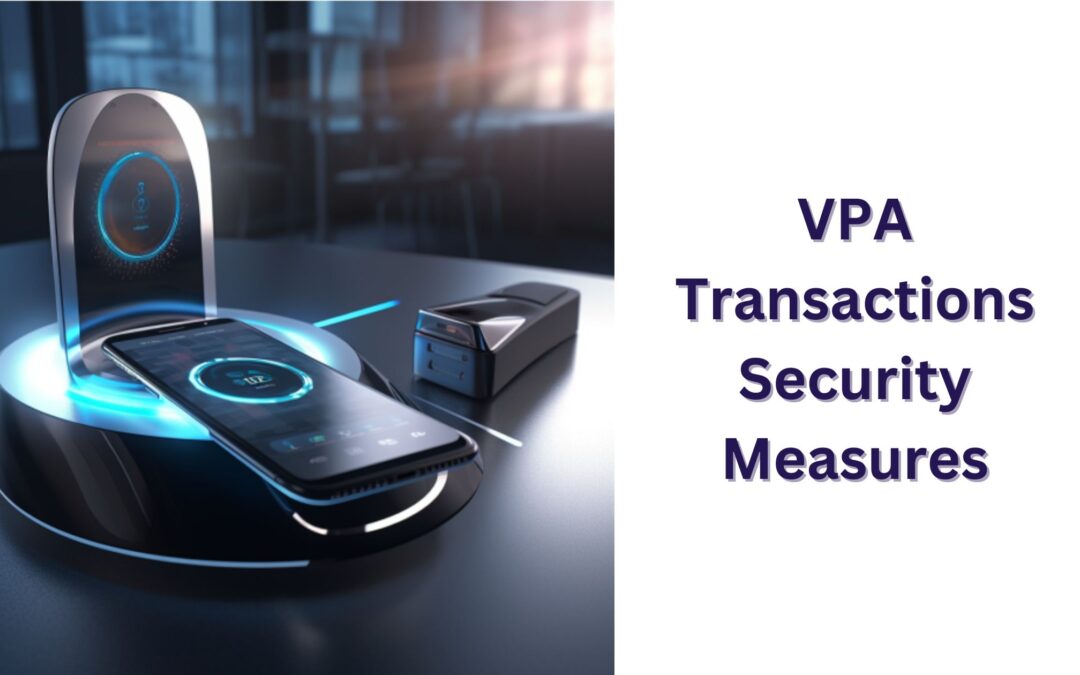In today’s digitally-driven world, Virtual Payment Addresses (VPAs) have revolutionized the way we conduct financial transactions. The convenience they offer is undeniable, but it’s crucial to prioritize security when using VPAs to protect your hard-earned money.
In this article, we will delve into the world of VPA transactions and explore the essential security measures you need to implement. Let’s embark on this journey to ensure the safety of your digital payments.
A Brief Introduction To VPA Transactions
Virtual Payment Addresses, often referred to as VPAs, are a modern payment identification method that has made digital transactions faster, more convenient, and secure. These unique identifiers have replaced the need to share your bank account details, making payments a breeze.
Whether you’re shopping online, transferring money to a friend, or paying bills, VPAs simplify the process. However, their widespread use has also attracted the attention of cybercriminals, making it vital for users to understand and implement security measures to protect their financial interests.
What is the Importance of Security in VPA Transactions?
In an era when cyber threats are becoming increasingly sophisticated, it’s essential to comprehend the significance of VPA security. Your VPA is a gateway to your financial accounts, and any breach can lead to unauthorized transactions, identity theft, or loss of funds. Therefore, safeguarding your VPA should be a top priority.
Choosing a Secure VPA Service Provider
The first step in ensuring VPA security is selecting a reputable service provider. Opt for providers known for their commitment to security and privacy. Research and read reviews to gain insights into their track record regarding user data protection and fraud prevention.
Creating a Strong and Unique VPA
Your VPA acts as a virtual key to your finances. Make it robust and unique to deter potential attackers. Avoid using easily guessable information such as birthdays or common phrases. Instead, craft a combination of letters, numbers, and symbols that only you can decipher.
Setting Up Multi-Factor Authentication (MFA)
Multi-Factor Authentication (MFA) adds an extra layer of security to your VPA transactions. Enable MFA on your VPA app to ensure that even if someone manages to obtain your VPA details, they still cannot access your account without the second authentication factor, which is often a code sent to your registered mobile number or email.
Regularly Updating Your VPA App
Security threats are ever-evolving, and VPA service providers continually release updates to patch vulnerabilities and enhance security features. Keeping your VPA app up to date ensures you benefit from the latest safeguards. Ignoring updates can leave your VPA susceptible to known exploits.
Monitoring Your VPA Transactions
Regularly reviewing your VPA transaction history is crucial. Look for any unfamiliar or suspicious activities. If you spot unauthorized transactions, contact your VPA service provider immediately to report the issue and initiate an investigation.
Avoiding Public Wi-Fi for VPA Transactions
Public Wi-Fi networks, while convenient, can be vulnerable to attacks. Cybercriminals can intercept data transmitted over these networks, potentially compromising your VPA information. It’s best to use secure, private networks for VPA transactions to minimize this risk.
Recognizing and Reporting Suspicious Activity
Vigilance is key when it comes to VPA security. Be on the lookout for any unusual activity, such as unexpected notifications or unfamiliar devices accessing your VPA. If you suspect foul play, report it to your VPA service provider and local authorities promptly.
Educating Yourself About VPA Scams
Knowledge is your best defense against scams. Stay informed about common VPA-related scams, such as phishing emails or fraudulent payment requests. Be cautious when sharing your VPA details and never respond to unsolicited requests for personal or financial information.
Securing Your Device
Your smartphone or computer is the primary tool for accessing your VPA. Ensure it is secure by using strong PINs or passwords. If available, enable biometric authentication methods like fingerprint or facial recognition for added security.
Using Secure Payment Gateways for VPA Transactions
When making online purchases using your VPA, opt for websites and platforms that offer secure payment gateways. Look for reputable payment processors that prioritize user data protection and encryption.
Regularly Checking Your Bank Statements
Even with VPA transactions, it’s essential to review your bank statements regularly. This helps you spot any unauthorized VPA transactions or discrepancies in your financial records. Timely detection can prevent further financial losses.
By implementing these security measures and staying vigilant, you can enjoy the benefits of VPA transactions with confidence. Remember that safeguarding your digital payments is a shared responsibility between you and your VPA service provider.
VPA Transaction Limits and Safety
Understanding the transaction limits associated with your VPA is essential. These limits can vary depending on your VPA service provider and account type. Familiarize yourself with these limits to avoid any issues, such as exceeded transaction limits or declined payments.
In conclusion, while VPAs offer unparalleled convenience in the realm of digital transactions, safeguarding your financial security should remain paramount. By following the security measures outlined in this article, you can enjoy the benefits of VPAs without compromising your financial safety. Remember that VPA security is a shared responsibility between you and your service provider. Stay vigilant, stay informed, and keep your digital payments secure.
FAQs
1. Are VPAs safer than traditional bank transfers?
VPAs can be secure when used correctly, but it’s essential to follow security best practices to ensure their safety.
2. What should I do if I suspect a VPA scam?
Immediately report any suspicious activity to your VPA service provider and local authorities.
3. Can I change my VPA if I suspect it’s compromised?
Yes, most VPA service providers allow you to change your VPA if you suspect any security issues.
4. Is it safe to store my VPA details on my mobile device?
It’s generally safe as long as your device is secure with a strong password or biometric authentication.
5. Are there any insurance options for VPA-related fraud?
Some banks and financial institutions offer insurance coverage for VPA-related fraud, so check with your provider for details.

